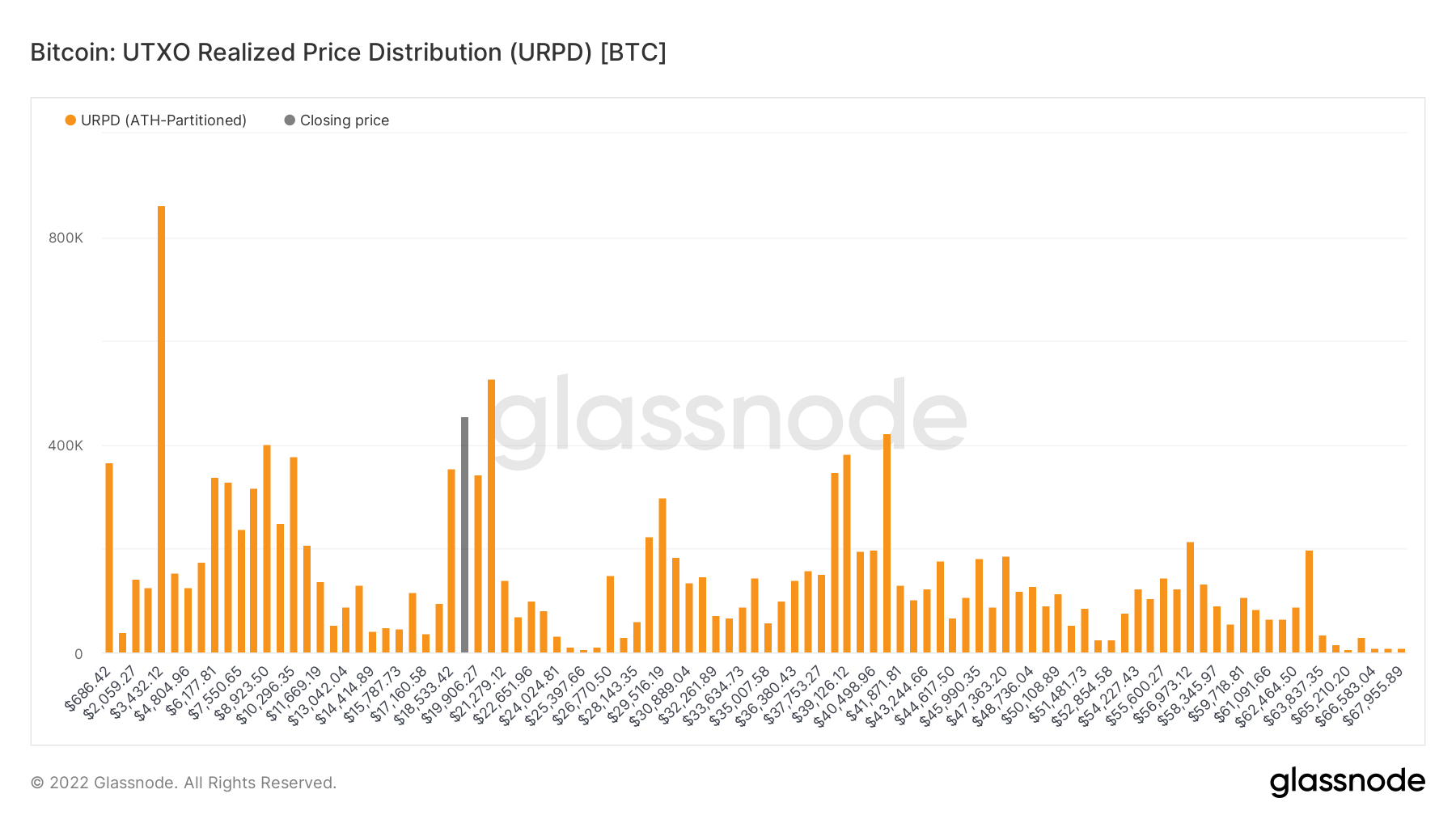HODL Waves are an indicator that bundles all active supply addresses by age bands. Each colored band shows the percentage of Bitcoin in existence that was last moved within the time period denoted in the legend.
A review of the current state of the HODL Waves chart by CryptoSlate indicates that short-term holders are at a lower level than the bottom of the 2016 – 2020 halving cycle.

Short-term holders are defined as a cohort holding bitcoin for less than 155 days. Short-term holders typically buy in strength during bull runs and distribute when prices start to drop due to increased price sensitivity.
The realized cap HODL Waves chart above showcases that short-term holders hold a significant amount of coins and historically contribute to the floor of bear markets. In 2015 short-term holders made up 21.4% and in 2019, it was over 29%. Presently, it is 27.4% marking a traditionally important moment within the halving cycle.

Short-term holders bought when BTC dropped below the psychological support at $20,000. The Unrealized Price Distribution (URPD) metric supports this thesis as a significant amount of concentrated coins have been bought around $17.5k to $22k. The overwhelming majority of holders, however, are long-term holders which form the base.
The important factor to remember is that Bitcoin has never had to navigate a global recession or Quantitative Tightening. Since 2009, Bitcoin has had the benefit of riding a wave of rising asset prices across myriad markets. While short-term holders drop to levels typical of a market bottom, on-chain metrics will have to contend with other macro factors amid soaring inflation and continued money printing.
However, one potentially positive indicator is the fact that the M1 money supply in the US has finally ticked down after reaching a high of $20.69 trillion. Updated numbers for August will be released later in September, yet, the most recent figures from July show the money supply dropping to $20.51 trillion.
Strong on-chain data can be seen as a signal of when Bitcoin is ready to head back towards a bull run when the global macro environment allows for it.
Credit: Source link






















 Bitcoin
Bitcoin  Ethereum
Ethereum  Tether
Tether  Solana
Solana  XRP
XRP  Dogecoin
Dogecoin  Cardano
Cardano  USDC
USDC  Lido Staked Ether
Lido Staked Ether  TRON
TRON  Avalanche
Avalanche  Shiba Inu
Shiba Inu  Wrapped stETH
Wrapped stETH  Wrapped Bitcoin
Wrapped Bitcoin  Toncoin
Toncoin  Stellar
Stellar  Polkadot
Polkadot  Bitcoin Cash
Bitcoin Cash  Chainlink
Chainlink  Sui
Sui  WETH
WETH  Pepe
Pepe  LEO Token
LEO Token  Litecoin
Litecoin  NEAR Protocol
NEAR Protocol  Aptos
Aptos  Uniswap
Uniswap  Wrapped eETH
Wrapped eETH  Hedera
Hedera  Internet Computer
Internet Computer  Cronos
Cronos  USDS
USDS  Ethereum Classic
Ethereum Classic  POL (ex-MATIC)
POL (ex-MATIC)  Render
Render  Bittensor
Bittensor  Ethena USDe
Ethena USDe  Bonk
Bonk  WhiteBIT Coin
WhiteBIT Coin  Artificial Superintelligence Alliance
Artificial Superintelligence Alliance  MANTRA
MANTRA  Dai
Dai  dogwifhat
dogwifhat  Arbitrum
Arbitrum  Cosmos Hub
Cosmos Hub  Stacks
Stacks  Filecoin
Filecoin 
